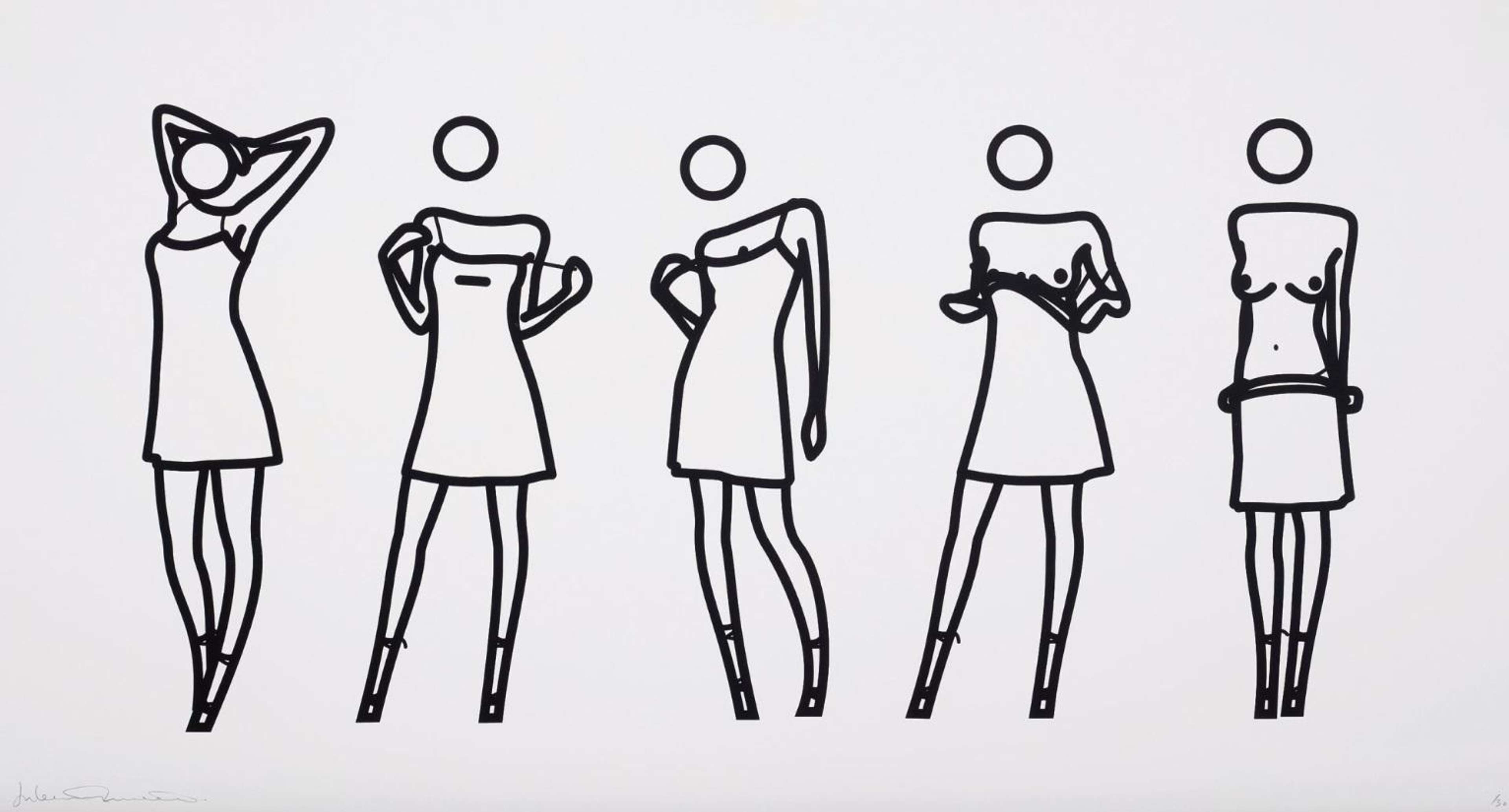Bijou Gets Undressed 2

Bijou Gets Undressed 2
Signed Print
Julian Opie
£8,000-£11,500
$16,000-$24,000 Value Indicator
$15,000-$22,000 Value Indicator
¥80,000-¥110,000 Value Indicator
€9,000-€13,000 Value Indicator
$80,000-$120,000 Value Indicator
¥1,620,000-¥2,320,000 Value Indicator
$10,500-$15,000 Value Indicator
There aren't enough data points on this work for a comprehensive result. Please speak to a specialist by making an enquiry.
38 x 78cm, Edition of 30, Screenprint
Auction Results

Track auction value trend
Meaning & Analysis
Julian Opie’s print Bijou Gets Undressed 2 from his 2004 Bijou Gets Undressed series is a horizontal composition featuring a woman taking off a dress through a sequence of five static poses. The final pose shows the model topless, with her dress pulled down to her waist, thus this print is charged with an explicitly sexualised tone.
Dynamic in its sequential composition, Bijou Gets Undressed 2 utilises gestures and iconography typical of a strip show to create an image of a predetermined ‘type’, whilst also maintaining a sense of realism through movement. In using clear-cut outlines to depict the figure and a blank circle as her head, Opie anonymises the model, working to further emphasise this idea of the woman as ‘type’.
Never erasing the personality of his models, Opie highlights the particularities of an individual through the reduction of frivolous details and a focus on pose. At the same time, there is a utilitarian quality to Opie’s visual language through his use of simplified shape and form that create a system of signs. Opie cleverly confronts the viewer to think about how we perceive images of people and how we might relate to them by presenting them as familiar signs.